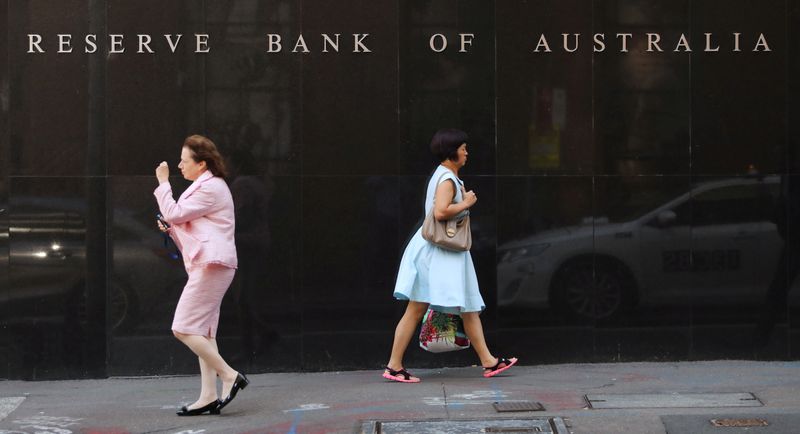By Wayne Cole
SYDNEY (Reuters) - Australia's central bank remains prepared to be patient on raising interest rates as it waits for wage growth to pick up, though it warned a surge in commodity prices caused by the war in Ukraine would add to inflationary pressure.
Minutes of its March meeting released on Tuesday showed the Board of the Reserve Bank of Australia (RBA) was generally upbeat on the domestic outlook with labour market conditions the tightest since 2008.
However, the outlook for the world economy had been darkened by the conflict in Ukraine.
"The invasion had created additional uncertainty about the global outlook and was an adverse supply shock that would result in lower growth and higher inflation," the minutes showed.
Yet Board members agreed it was too early to conclude that inflation would not again fall out of the 2-3% target band once supply pressures abated, and noted wage growth still lagged.
"The Board is prepared to be patient as it monitors how the various factors affecting inflation in Australia evolve," it concluded.
The central bank kept interest rates at a record low of 0.1% as widely expected at the March meeting, though RBA Governor Philip Lowe did say it was plausible a first hike could come later this year should the economy strengthen as expected.
So far, economic activity has surprised with its resilience as household's used extra saving built up over the pandemic to spend with abandon.
A wave of Omicron cases, the rising cost of living and massive flooding on the east coast have tested confidence, but not derailed the recovery.
The labour market has been particularly impressive, generating a record run of jobs that pushed unemployment to its lowest in 13 years at 4.2%.
RBA Governor Philip Lowe is keen to get unemployment under 4% for the first time since the 1970s and is prepared to keep rates low to deliver it and, hopefully, drive wages higher.
Complicating this mission is a recent surge in global commodity prices which looks certain to lift inflation above the RBA's, already lofty, forecasts.
Core inflation is running at a relatively manageable 2.6% but analysts suspect it will spike above 3% in the March quarter and rise further in the June quarter.
That is a major reason financial markets are pricing in a first rate hike to 0.25% in June and a string of increases to at least 1.25% by year end.

Such a rapid-fire tightening would be a shock to borrowers, many of whom have not seen an official rate rise given the last RBA hike was back in 2010.
So indebted are households that many analysts assume rates will not have to rise far to really crimp spending, with some predicting a peak of 1.75-2.0% and a few as low as 1.25%.